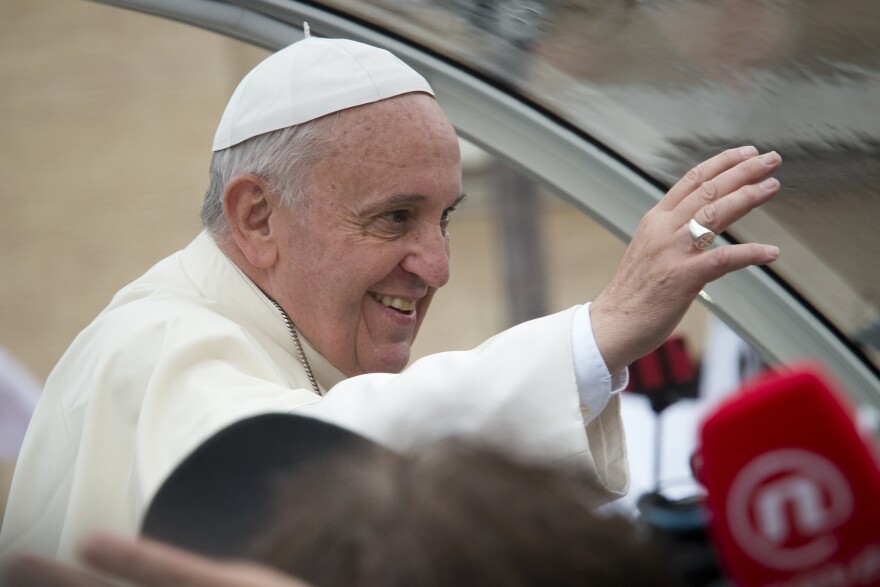Within the Catholic Church, ordained deacons provide assistance to bishops and priests. They can officiate at baptisms, weddings and funerals and are allowed to preach at Sunday Mass. For decades, this role has been reserved for men only.
But that may soon change.
Pope Francis announced recently that he wants the church hierarchy to consider ordaining women to what's known as the "permanent diaconate."
Speaking on GLT's "Sound Ideas," Hofstra University theologian Phyllis Zagano, one of the nation's foremost advocates for women deacons, said such a change would in effect be going "back to the future."
Women in the early church served in roles similar to that of present-day deacons, she said. They were involved in the charitable works of the church, preached and ministered to other women.
Indeed, there is one woman in the New Testament who is described as a deacon. She is Phoebe, said to be the deacon of the church in Cenchreae. "She is the person we understand carried St. Paul's letters to the Romans," Zagano said.
On a visit to Philadelphia in September of last year, Pope Francis told a gathering of U.S. bishops that the apostles recognized they couldn't do all the work the church required, Zagano said. "So they basically invented -- and that is Francis' word, invented -- the diaconate. If the diaconate is is a creation of the church, the church can change it," Zagano added.
Not so the priesthood, however. On that hot button issue, Zagano said, the church has been clear that only men can be ordained priests. "The argument is that priesthood is off limits because Jesus is known to have chosen male apostles," she added.
Zagano said she does not expect that teaching to change, even if women are allowed to become deacons.
She argues, however, "There is really no barrier to restoring women to their traditional role [as deacons] because the diaconate from the very beginning, the earliest documents of the church, there were male and female deacons."
Male and female deacons were common in the church up until the Middle Ages, when the role of priests became more dominant and powerful. The Second Vatican Council, which took place in the early 1960s, restored the role of deacons, and they have been a common presence in Catholic parishes since the early 1970s. Deacons serve in every Bloomington-Normal parish.
Today, the diaconate is split between unmarried men who plan to pursue ordination as priests, and single, married or widowed men who are ordained to the "permanent diaconate." Women would become part of the permanent diaconate if current rules change.
One rule of the permanent diaconate is that while deacons are permitted to be married, those men must vow not to remarry if a spouse dies. Women deacons likely would be expected to do the same.
There are currently 15,000 permanent deacons in the church, compared to about 37,500 priests, according to Georgetown University. Fairbanks, Alaska has the highest per capita concentration of deacons of any U.S. city.


